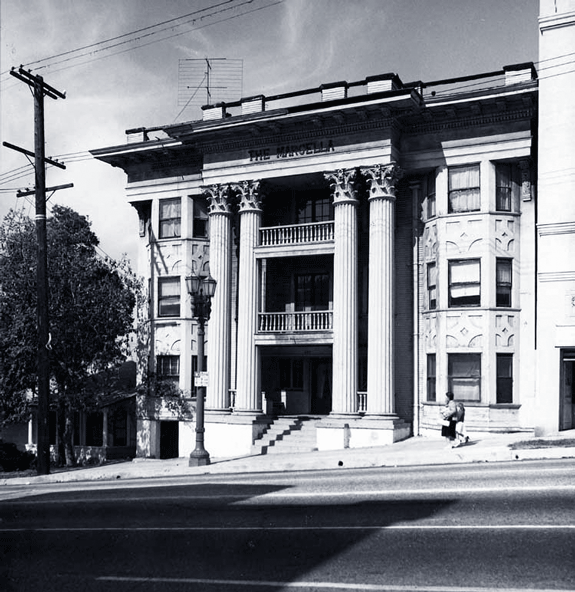 Today we discuss The Marcella, who once flaunted her classical order on Flower (she is Italian, please be advised the C in her name is not pronounced s as in sell, but like ch as in chin). See how her name beckons, proud but not haughty, from her entablature? She wants to take you in and protect you under that great cornice with her large corbels. Despite her imposing presence, she is warm, and welcoming; the wide porches bespeak grace, and the timberframe vernacular on the bays coo cozy by the fire lad, there‘s good feelings in mortise and tenon.
Today we discuss The Marcella, who once flaunted her classical order on Flower (she is Italian, please be advised the C in her name is not pronounced s as in sell, but like ch as in chin). See how her name beckons, proud but not haughty, from her entablature? She wants to take you in and protect you under that great cornice with her large corbels. Despite her imposing presence, she is warm, and welcoming; the wide porches bespeak grace, and the timberframe vernacular on the bays coo cozy by the fire lad, there‘s good feelings in mortise and tenon.
But don‘t speak of fire. Fire struck the Marcella in October of 1912, sending well-to-do ladies like Mrs. L. M. Harvey to Pacific Hospital after having leapt from upper stories. Other occupants hustled (stricken with panic; see below) and scantily attired into the street. Marcella owner C. F. Holland states he‘s looking at $3,000 ($65,983 USD2007) in damages, $2,000 to the rugs and furniture alone.

It is reported that a man was seen running from the building a few minutes before the fire broke out. The storeroom, where the fire began, was not locked. The mystery is never solved but Marcella, stout of bay and stalwart of column, cannot be burned away. She perseveres.
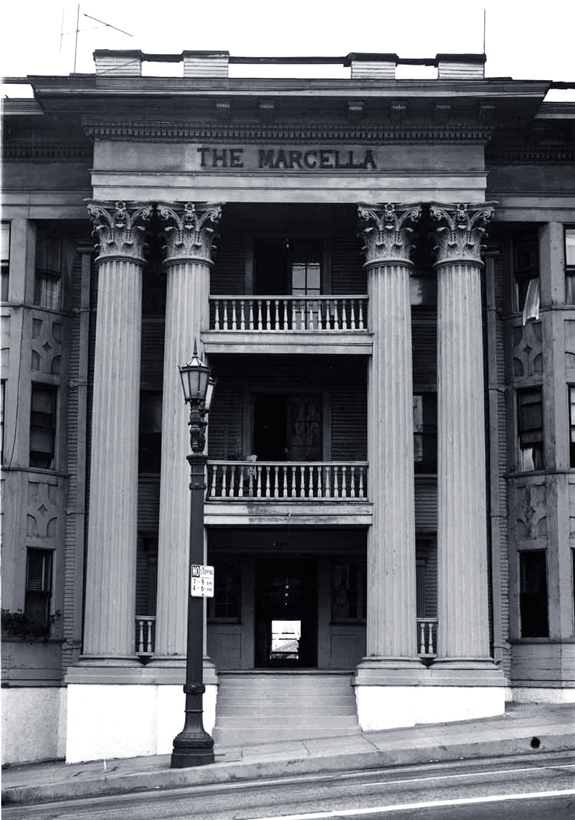
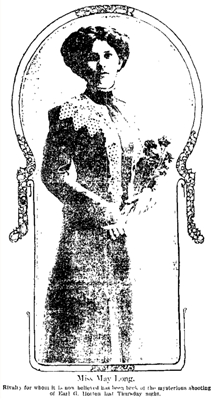
The Marcella is a building so lovely she attracts only the comeliest of patrons. She is home to Miss May Long, a lass so fetching that when in May of 1913 she turned her attentions to one Earl G. Horton, he is gunned down by another suitor outside of his apartment house near Temple & Victor.
Jealousy over a woman causes upset again at the Marcella on October 25 of 1922 when Emergency Patrolman Claude Coffrin went to visit Mrs. Tillie Smith in her Marcella apartment. Not long after Coffrin’s ingress, there appeared Emergency Patrolman Anthony Kazokas and a civilian, Joe Cummins. Kazokas had loaned Cummins his revolver and badge to settle his romantic score with Coffrin over Tillie.

Coffrin and Cummins fought, and Coffrin gained control of the gun; he phoned the Detective Bureau and over came officers Nickens and Ellis. Cummins at that point grabbed the gun back from Coffrin and stuck it in Nickens‘ side, and Patrolman Kazokas jumped on Detective Ellis. Ellis brained Kazokas out cold with the butt of his gun, but Nickens ended up shooting Cummins through the neck.
The lovely Mrs. Smith was arrested on violation of parole; she had been sentenced on the 18th to pay $50 and spend thirty days in jail–suspended–for “social vagrancy”. Apparently, quality of young lady was beginning to decline at the Marcella.
![]()
Other upstanding members of society to grace the Marcella‘s rooms were the Jacksons, of whom you read all about here.
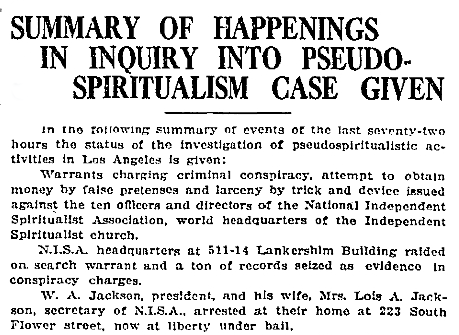
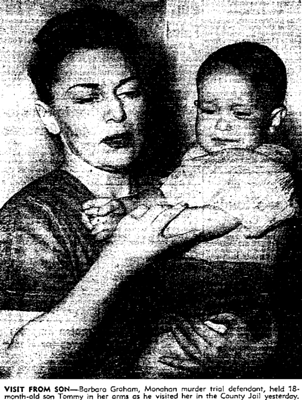
And remember Barbara Graham? What helped send Barbara to the chair was hubby Henry‘s testimony on the witness stand. Her last-ditch alibi was that she and Henry were together that night of March 9, 1953–but Henry testified he had already moved out and was living with his mother”¦at the Marcella. (A mere two blocks down from the Lancaster, scene of Baxter Shorter’s abduction.)
Little Tommy Graham, now five, was living in the Marcella in 1957 when Wanger Pictures gave him $1000 for filming his executed mother‘s life story.
Fire again struck the Marcella, this time in 1962, and this time it meant business. On March 30 a blaze razed the upper two stories of the structure. Twelve fire units quelled the blaze in half an hour; She of 223 South Flower vanished from memory soon afterward.
Here we are looking north on Flower through the intersection of Third, 1965. See the little Victorian, left center? The Marcella was just on the other side of that.

Today Flower Street makes a sharp turn between Third and Second to avoid the Bunker Hill Towers. The Marcella stood just on the other side of this pool:


Interesting, and, what, perhaps a little unnerving, but certainly instructive, to consider that the image that began this post, and the one immediately above, were taken from the same spot.
Top image courtesy Arnold Hylen Collection, California History Section, California State Library; center images courtesy William Reagh Collection, California History Section, California State Library




 teenaged mother in
teenaged mother in 
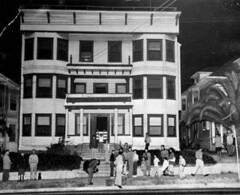 the kidnappers as Emmett Perkins. The other man was almost certainly
the kidnappers as Emmett Perkins. The other man was almost certainly 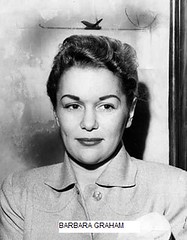 hadn”™t made the mistake of offering a fellow inmate $25k to provide her with an alibi for the night of the murder. Unfortunately for her, the cellmate was actually a cop, planted to befriend her and gather information. Barbara”™s blunder had doomed her to death.
hadn”™t made the mistake of offering a fellow inmate $25k to provide her with an alibi for the night of the murder. Unfortunately for her, the cellmate was actually a cop, planted to befriend her and gather information. Barbara”™s blunder had doomed her to death.